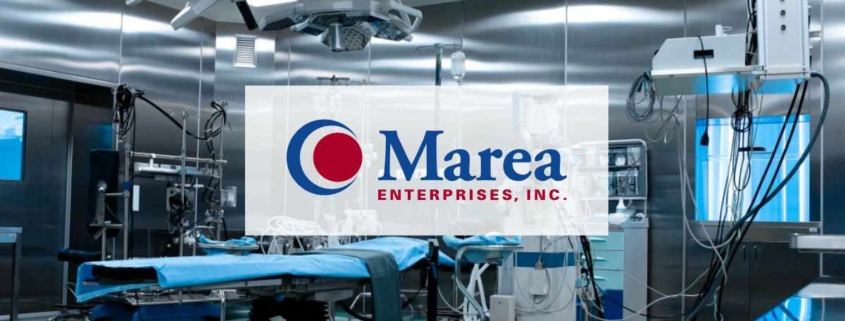2019 ASNM ASET Presentations Reducing Accidental Needlesticks During IOM Procedures
Table of Contents
Reducing Accidental Needlesticks during IOM Procedures
Author: Grace Padilla-Kastenberg1 , MPH, Brent Tyler2 , MD, CNIM
Marea Enterprises1 and Beacon Monitoring2
Intro & Problem
Accidental needlesticks continue to present a serious occupational hazard to healthcare workers. According to the CDC, nearly 400,000 needlestick and sharps injuries take place annually, most during surgical procedures. These injuries pose significant risks in the transmission of bloodborne pathogens, including HIV, Hepatitis and other diseases. IOM practitioners are uniquely at risk given the sheer number of needles that are placed during neuromonitoring procedures. Recent data has also revealed that injuries incurred by non-hollow bore sharps, similar to those employed during IOM, have eclipsed injuries experienced by traditional hollow-bore needles. This important distinction places IOM practitioners uniquely at-risk to needlestick injuries. Additionally, if needlestick injuries occur, IOM practitioners are required to undergo the same post-exposure prophylaxis protocols and experience the same psychological impacts as any other healthcare worker.
Purpose
To determine the efficacy of adhesive fixation solutions for the purposes of needle electrode placement on needlestick injuries in a singular IOM practice. Methods: A retrospective analysis was conducted in an IOM practice comparing two nearly equal periods of time, (over the course of twelve years) on the use of various adhesive fixation solutions to secure needle electrodes and their impact on needlestick occurrence. First Phase: 2006-2012; Second Phase: 2013-2018.
Table 1- Summary Twelve-year Data Collection-Singular IOM Practice

Results
A total of 2002 IOM procedures that required needle electrode placement were employed during the twelve year period (est. total of 41K needles were placed during these procedures). A total of 32 needlestick injuries were reported during the First Phase where 3 different types of adhesives were employed. A total of 3 needlesticks were reported in the Second Phase when NeedleTape® was introduced and used exclusively. A near 90% reduction in needlesticks were experienced during the Second Phase.
Table 2- Needlestick Injury (NSI) by Fixation Type

*Micropore™, Transpore ™, 3M Silk tape
Discussion
Engineering controls are known to positively impact the rates of needlesticks and sharp injuries in healthcare settings. In fact the CDC estimates that between 62% to 88% of injuries can be prevented simply by user safer devices. Due to the adoption of the NeedleTape® product, the IOM practice experienced a significant decrease in the incidence of needlestick injuries during the Second Phase. The practice also reported a reduction in injuries to other healthcare workers within the operating room during IOM procedures since the integration of the safety device. The device differentiator lies in a warning identifier printed on the top side of the adhesive device. Needlestick reduction experienced by the IOM practice can in part be attributed to this warning identifier that highlights the presence of needles. A heightened level of awareness throughout the operating room was an additional benefit cited by the IOM practice. The study has its limitations that include; a singular practice, slightly different comparison periods, and anecdotal and self-reported data. However, this analysis displays the importance of further studies within IOM and needlestick safety and other safety devices that can help curb accidental needlesticks.
DOWNLOAD PDF – https://mareaenterprises.com/wp-content/uploads/2022/08/ReducingAccidentalNeedlesticksDuringIOM_Padilla_Kastenberg_2019ASNM.pdf



